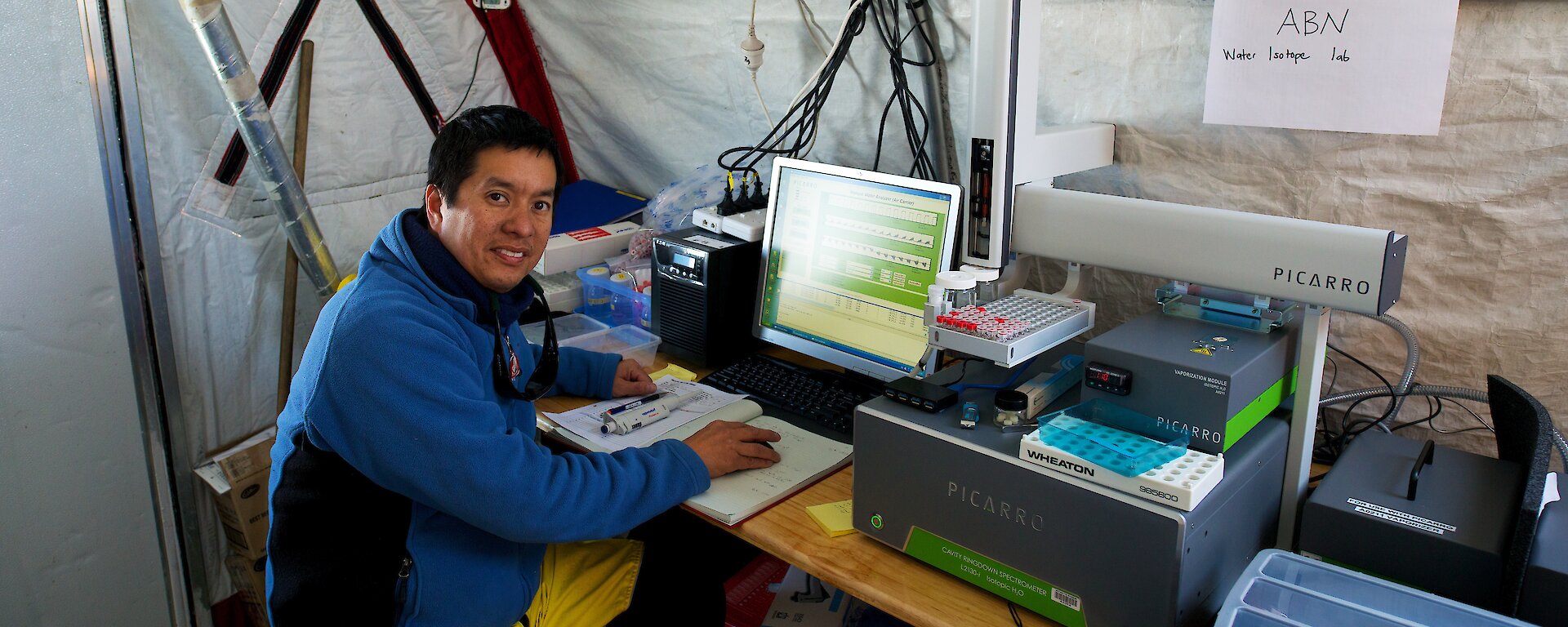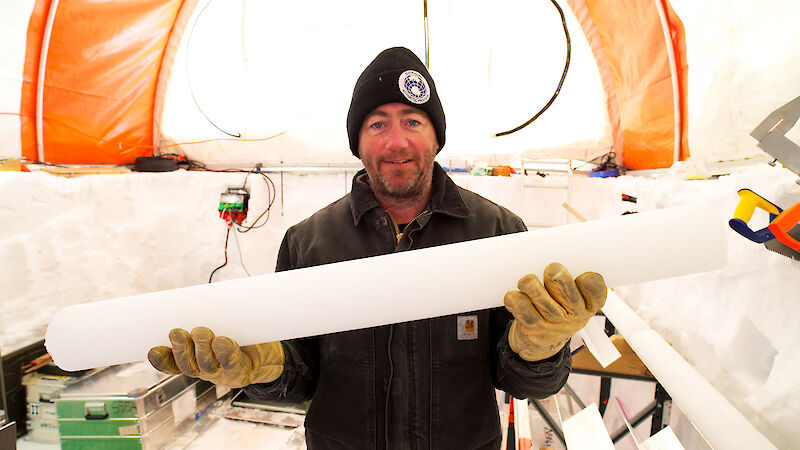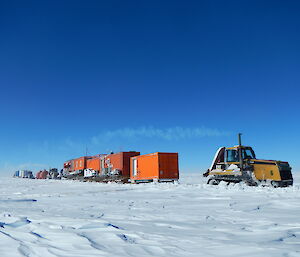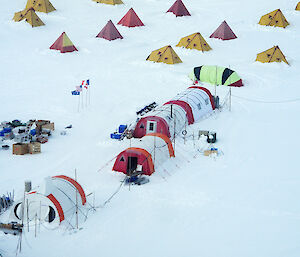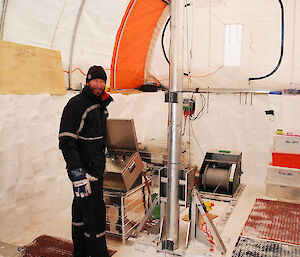An ice core climate record spanning the past 2000 years was retrieved from the remote heart of Antarctica this past summer by an international team of scientists and deep field operators.
About two tonnes of ice core sections, drilled over five weeks at Aurora Basin, 500km inland from Casey station, made the long sea journey to Hobart in a refrigerated container onboard the Aurora Australis in February.
The ice cores will now be transferred to Australian and international ice core laboratories for analysis of atmospheric gases, particles and other chemical elements that were trapped in snow as it fell and compacted to form ice.
Leader of the Aurora Basin ice core drilling project, Dr Mark Curran, of the Australian Antarctic Division, said the 2000 year core will help fill a gap in the international science community’s knowledge by providing annual climate records prior to and during the industrial era.
‘We used a Danish Hans Tausen drill to extract our main ice core, which is 303m long and spans the past 2000 years,’ Dr Curran said.
‘We also used two other smaller drills to extract 116m and 103m cores, spanning the past 800 to 1000 years, to obtain extra ice for large volume chemical analyses.
‘Using a variety of scientific tests on each core, we’ll be able to obtain information about the temperature under which the ice formed, storm events, solar and volcanic activity, sea ice extent, and the concentration of different atmospheric gases over time.’
The effort to retrieve the cores began with a 1300km traverse from the French Antarctic station, Dumont d’Urville. Over 15 days, the nine-person French and Australian traverse team hauled 30 tonnes of cargo for the ice core camp, including an ice core drill, tents, food and scientific equipment.
Australian Antarctic Division climate program leader and ice core driller, Dr Tas van Ommen, and Aurora Basin Field Leader, Sharon Labudda, travelled with the French-led traverse, during which they experienced temperatures as low as −34°C. Once at the Aurora Basin site the traverse team set up part of the camp and prepared a skiway for the first group of scientists to arrive by air about 10 days later.
‘When the ice core camp was in full swing, we had a team of about 16 people at a time working on the drilling, processing and packaging the cores, digging snow pits and setting up and maintaining equipment and the camp site,’ Dr van Ommen said.
A highlight of the team’s work was obtaining a 300 year temperature record from the main ice core using a field-based ‘laser spectrometer’. In the past, scientists used laboratory-based techniques to measure temperature, which could take up to two years to complete.
‘This field-based technology speeds up our core analysis and also acts as an insurance, should anything happen to the ice core — at least we walk out of the field with some data,’ Dr Curran said.
‘But most importantly, the spectrometer allowed us to see the summer and winter snowfall variations in the ice. This detailed seasonal information is exactly what we wanted.
‘There are only a handful of records with comparable resolution that extend to 2000 years from the whole of Antarctica, and this is only the second one in this sector of East Antarctica. The other one is our record from Law Dome.’
The team also extracted old air from ‘firn’, or unconsolidated ice, in the drill holes, and measured concentrations of atmospheric gases, such as methane and carbon dioxide, that had been trapped in the ice since the 1980s.
Field Leader Sharon Labudda said one of the most challenging operational aspects of the project was poor flying weather.
‘The weather was worse than we anticipated and there were 18 days between flights in the middle of the season,’ she said.
‘I was in constant contact with Casey station for weather updates. Depending on those updates, Mark and I set dates for the completion of the project goals, while ensuring we had sufficient time to pack up the whole camp and send it back to Casey by air.’
The cores were also flown back to Casey and stored in a refrigerated container at −20°C. The container was then transferred to the ship for the 3500km journey home.
Despite difficult weather conditions and some minor equipment issues, Dr Curran said the Aurora Basin project achieved all its scientific goals and demonstrated Australia’s capability to run an internationally collaborative project in an unexplored area of Antarctica.
The project paves the way for a more ambitious drilling expedition to collect a one million year old ice core.
‘The Australian Antarctic Territory and Aurora Basin, particularly, has some of the thickest and likely the oldest ice in Antarctica,’ Dr Curran said.
‘The results from this project will contribute to the international search for a drilling site for one million year old ice. Such an ice core would help us understand what caused a dramatic shift in the frequency of ice ages about 800 000 years ago, and further understand the role of carbon dioxide in climate change.’
The Aurora Basin project involves 15 partner organisations contributing from six nations: Australia, China, Denmark, France Germany and the United States of America.
Read more about the research and blogs from the field.
Wendy Pyper
Corporate Communications, Australian Antarctic Division

